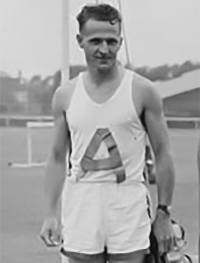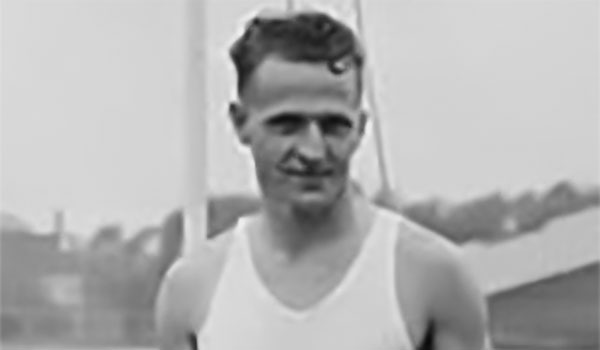
Arthur Lydiard has remarkably influenced the world of distance running. Through a lot of experimenting, he found ways that tremendously improved athletes’ performance.
He knew his methods worked, but he didn’t exactly know “how”. The terms like aerobic, anaerobic, plyometrics were unknown back then.
He was way ahead of his time in using endurance training, hill training, and periodization. In that period, competitive runners used to train only by racing fast. Twice a week. Running more than that was considered harmful.
His discovery of jogging was as groundbreaking as his training principles. He realized the health benefits of distance running and brought it to ordinary people. Millions took up running. And the number is increasing each year.
In this post, let’s take a look at his training principles which you’ll see are being used by the top coaches and runners of today.
Lydiard’s training system is a balanced combination of aerobic and anaerobic training. Each training phase is arranged in a logical sequence. Here is a great overview of his training philosophy in his own words:
“If you want to be a successful runner, you have to consider everything. It’s no good just thinking about endurance and not to develop fine speed. Likewise – it’s no good training for speed, or anaerobic capacity with lots of interval type of training when you haven’t developed your aerobic capacity to maximum. You have to take a long view and train on all aspects of development through a systematic program. It’s a lot of hard work for five, six or seven years. There’s no secret formula. There’s no shortcut to the top.”

1. Marathon Conditioning
This is considered the most important phase of the Lydiard training system. He would never compromise with this. In fact, in some situations, he could compress hill resistance and anaerobic phases. But never skip the aerobic phase.
The purpose of this phase was to systematically build the aerobic capacity – to the highest level possible.
Lydiard noted that running at between 70-100 percent of the max aerobic effort would give the best results. The goal was to run at a “good effort” and finishing each run feeling “pleasantly tired”.
Also, Lydiard made sure this phase was absolutely aerobic. None of the training was supposed to go over the anaerobic threshold. He was very strict about it. He considered this harmful to the aerobic system development.
Volume and Duration
Lydiard found that most competitive distance runners could comfortably handle 10-12 hours of steady-to-strong aerobic running a week. This would result in a volume of around 100 miles per week. And that’s how the famous 100-mile mark came into existence.
An important thing to note here is – Lydiard completely switched to time-based schedules later on when he learned that it was taking slower runners, way too long to achieve this weekly volume.
Highly competitive track runners would spend 8 weeks in this phase. Road runners and marathoners would spend 10. And if there was enough time, a longer period would be spent on the aerobic buildup.
Key Points
- The runs were a mix of various distances with varying effort levels. This was a great way of balancing the weekly schedule and would help runners absorb the training properly.
- Some days were designated as higher aerobic effort days. These runs were just like Sub-threshold tempo runs, or marathon-pace medium distance runs.
- His athletes did a long run of 22 miles (35km) on the weekend. And the road they performed it on had everything – hill ascents, descents, undulating parts, and flat stretches.
- Lydiard also found that adding slower, easier recovery runs in secondary sessions could produce even finer results. In fact, some of his runners ran twice a day, every day, except Sunday.
Lydiard made an effort system to describe the level of effort required for a particular run. For example:
- 1/4 effort – This would describe a steady long run or general aerobic run.
- 3/4 effort – This would describe a strong run that would be equivalent to a run just below the anaerobic threshold or marathon pace.
- 7/8 effort – would describe a hard “time trial” during final race preparations.
2. Hill Resistance Training
In this phase, the goal was to strengthen the leg muscles with resistance exercises – while maintaining and increasing aerobic fitness. Lydiard considered the hill training as an extension of the final 4 weeks of the aerobic buildup.
Hill training would focus on strengthening the muscles most specific to running at high speeds. And it would prepare runners for the demands of race-specific training to come in the next phases.
He recommended finding a hill which should be about 200 to 300 meters or longer, with a flattish area at the base of approximately 200 to 400 meters for sprinting. And an area at the top where it is possible to jog.
Below is how he recommended approaching hill training:
- 15-minute warm-up
- Then springing up the hill with a bouncing action and slower forward progression
- 3-minute jog at the top
- Then running downhill with a fast relaxed striding action
- Some wind-sprints at the base of the hill
- Then 15-minute cool down
Hill Springing
In this exercise, body weight is used for resistance. The slower the momentum, the more resistance is felt. The center of gravity must be lifted up and down, and not just the knees. The upper body is kept relaxed. And the head should be held up without looking down at the ground.
Wind-sprints
Wind-sprints (sprint repetitions) should be done to gradually accustom the body to exercise anaerobically, varying the distances from 50 to 400 Meters with each circuit. If the circuit is short, these should be performed only every 15 minutes. He recommended performing 50, 100, 200, and 400 meters wind-sprints.
This anaerobic training wasn’t supposed to be too intense or too much at this point. And the short work bouts with ample recovery ensured that.
He recommended 15 minutes of hill exercises in the first week. And then gradually building up to 30 and 45 minutes.
Originally, Lydiard’s athletes did Hill work 6 days a week. But he later concluded that it could be equally effective when performed two to three times a week. So he recommended alternating hill training with leg-speed work (described below). Each would be done 3 days a week. And finally one long run of 1.5 to 2 hours at an easy effort.
Leg Speed
To perform these you need a somewhat flat area with a gradual decline. And it should be about 120 to 150 meters long. The workout is started with a 15-minute warm-up. Then performing these 10 times with a three-minute interval. Runners should think of moving the legs as fast as possible without worrying about stride length. The upper body should be kept relaxed. and finally finishing the workout with a 15-minute cool-down.
Lydiard recommended training twice a day, every day, in every training phase – even if it is only for 15 minutes in the secondary session.
An example schedule during this phase:
Monday, Wednesday and Friday – Hill training
Tuesday Saturday – Leg-speed
Sunday – Long run
3. Speed Development
The purpose of this phase was to further develop anaerobic capacity. Lydiard used to refer to this phase as “tiring, exacting work.”
He said that 4 weeks of this training is sufficient to gain the desired results. Continuing it for longer than that would negatively affect the body’s metabolism.
He advised runners to perform this type of training 3 days a week on alternate days. And advised never to perform hard anaerobic training on consecutive days.
The paces in this phase were quite similar to the VO2 max pace. VO2 max pace is very close to 3000m race pace for world-class athletes or close to what the rest of us can run for 8 minutes.
Lydiard had effort tables which were based on average best race times at various distances. And required his runners to follow them closely to gain the benefits.
He recommended a total of about 3 miles or 5000 meters of fast running in a session. Following workout examples would achieve this:
12 X 400 meters, 6 X 600 meters, 5 X 1000 meters or 3 X 1 mile with a recovery jog of equal distance in between.
On alternate days, he recommended doing sprint training workouts – to develop speed to near its maximum.
So a typical workout in this phase would look like this:
- 15-minute warm-up by easy running
- 10-15 minutes of the exercises (described above)
- 5 minutes easy running
- 70-100 meter runs with a 3-minute jog between each. In these runs, runners were advised to focus on developing stride length, knee lift, and quick leg turn-over. These runs could be done two or three times with each exercise.
On some days, runners could perform a few fast relaxed runs over 100-150m with long easy recoveries.
And finally, the usual long run on the seventh day – depending on the age and ability of the runner. So an experienced, fit runner could run for 2 hours or more at an easy effort.
4. Sharpening
This phase would take another 4 and a half weeks. The aim was to coordinate all the training done so far.
Lydiard called it sharpening – “putting the edge on the knife” of anaerobic training.
This way the runner would get into racing shape without negatively affecting his conditioning.
So the volume of anaerobic training was dropped but the intensity was increased. An example workout would be 5 laps around the track by sprinting 50 meters then floating the other 50.
He recommended doing this type of workout only once a week.
And then on some day, a time trial could be run over or near the goal race distance. The time trials helped runners observe their weaknesses. And then they would perform appropriate exercises to address them.
The rest of the days would include sprint training or leg speed. And a long run at low effort at the end of the week.
5. Freshening up (Peaking)
In the last 10 days, before the goal race – runners would freshen up by limiting the volume of fast running and doing their long runs at very low efforts.
He recommended training every day, but easily. The runners were encouraged to do plenty of jogging. And the intense anaerobic work was done with ample recovery.
So in this period, a schedule would have:
- A long run at very low effort
- some steady time trials at or near race distance
- Race-specific repetitions with low volume
- Leg-speed sessions
- Very low-intensity aerobic runs on recovery days
References and Other Useful Resources
- I referenced Healthy Intelligent Training by Keith Livingstone which is a widely accepted modern interpretation of Lydiard principles. The book is amazing, I highly recommend reading it. You can get it on Amazon.
- Arthur Lydiard’s Athletic Training pdf at fitnesssports.com is also great. It has details about his training and schedules.
- If you want to learn more, there are some great resources at the Lydiard Foundation website.
- I also found two parts of his interview on youtube (see below). Unfortunately, other parts are missing. I have also linked to two very interesting documentaries below. They were a real pleasure to watch.
On the Run -1979 can be found at nzonscreen website.
You May Also Like:


Fantastic work, Pankaj!